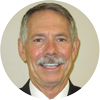
THA Retirement Plan
The Texas Hospital Association Retirement Plan is designed to meet the retirement needs of hospitals and health care entities. Sponsored by THA, it is one of the largest trade association-managed programs in the United States.
Written by Gretchen Heber
In today’s market, hospitals must use every tool available to help recruit and retain the best hospital employees – particularly as Texas has one of the country’s largest shortages of physicians and nurses to care for its growing population. A key tool for hospitals to set themselves apart is their employee benefits package; a robust employee retirement plan is a crucial part of that package.
Yet hospital administrators are often already stretched thin without the added responsibility of overseeing a best-in-class retirement plan for employees. Many turn to an outside consultant or benefits firm to help them manage their hospital’s retirement plan.

“Most small hospitals have just one HR person, if they have an HR department at all, and there’s no way that person could manage a retirement plan on top of everything else,” said Leisha Elrod, human resources director at Eastland Memorial Hospital.
Eastland, and many other Texas hospitals, have turned to the Texas Hospital Association Retirement Plans for a comprehensive strategy to provide hospital employees with post-career financial security.

The THA Retirement Plan is crafted especially for smaller, independent hospitals and systems based in Texas, said Lea Anne Porter, vice president of the THA Retirement Plan. “Most of our hospitals have at least 100 employees and at least 25 beds. Some are as large as Citizens Medical Center in Victoria, with 500 employees,” she said.
THA offers a number of types of plans, including traditional and money purchase pension plans, profit sharing, 401(k), 403(b) and 457(b).
“We offer everything that a regular 401K plan offers,” said Porter. “The THA Retirement Plan includes diversified group stock, bond and mutual fund portfolios from nationally known investment managers. We add the additional layer of oversight from our team and our board of successor trustees, appointed by the THA board of trustees.”
Equally important, said Porter, member hospitals appreciate the customer service THA Retirement Plan offers. “It’s a turnkey operation; we do everything for them.”
THA Retirement Plan works with hospitals to build a custom plan that specifically addresses each hospital’s requirements.
“We meet with C-suite leaders and HR directors from each hospital to identify specific challenges,” said Porter. “Then we suggest a plan designed to meet identified goals and solve specific problems.”
Some employers, for example, might struggle with high turnover for new employees. For those hospitals, Porter said, she and her team could recommend adopting a waiting period to qualify for retirement benefits so the hospital doesn’t spend resources on short-term employees.
And to combat high turnover, Porter said, “We might recommend a vesting schedule for employer contributions that encourages employees to stay at least five years. Plus, we’ll recommend offering a good match that’s competitive with the market.”
“Each hospital is slightly different but many of the issues are very similar,” said Porter. “We’ll work with each facility to put together exactly what makes sense.”
Overseen by an independent board of hospital executives, the fund is managed by a well-regarded team of legal and investment managers, including actuarial firm Rudd and Wilson, law firm Jackson & Carter, financial experts Morgan Stanley and Schwab, and many others.
“Hospitals come to us frustrated by their current plan manager,” said Porter. “They get in with these big insurance brokers who put them in a contract with really high fees.”
“We’ll do a fee comparison, and we’re usually so far below what the hospital is currently paying that it is just common sense to switch to us,” said Porter.
Indeed, Eastland Memorial Hospital was previously with a big-name financial services company. “It was too big for us,” said Elrod. “Its service was inadequate and its fees were high.”

Eastland, a 52-bed, 148-employee Level IV trauma hospital west of Fort Worth, is “a very busy rural hospital,” according to its CEO, Ted Matthews, and serves the approximately 4,000 residents of Eastland and surrounding areas.
“I knew the retirement plan we had wasn’t right for us,” said Matthews, who’d previously worked for a hospital that partnered with the THA Retirement Plan. “Switching to the THA plan has been one of the best decisions we’ve made.”
Elrod concurs. “They focus on hospitals,” she said. “We looked at the fund selection that they offer. We did an expense comparison. And customer service was very important.”
Matthews agreed that a number of factors came into play when evaluating the THA Retirement Plan. He appreciates that the plan’s board of trustees is made up of representatives from the hospitals that use the plan, which means hospitals have a voice in how the plan is managed.
He was also impressed with the fund selections and the record of fiduciary compliance, for example, as well as with the low expense and cost ratios.
Compliance is a big issue, said Porter. “When we bring hospitals into our plan, 80 percent of the time we have to do some kind of correction,” she said. “For example, their plan documents are out of date or they didn’t keep up with proper amendments.”
Also important to both Matthews and Elrod is the ongoing education THA offers for Eastland employees. “They send someone to our facility at no cost to do both group and individual meetings with our team,” Elrod said. “In fact, there was so much interest from our employees the last time THA visited, we had the representative stay an extra day.”
“Most people in the health care industry are familiar with THA,” said Matthews. “There’s a lot of name recognition, so our employees are comfortable signing up with their retirement plan.”
Elrod said employee participation has jumped since the hospital switched to the THA plan. “Since we joined two years ago, we’ve gone from 30 percent participation to almost 46 percent,” she said.
“Nothing is more satisfying than when we hear employees say, ‘Goodness, have you seen how much our retirement plans have been growing?’,” said Matthews. “We want to do what’s right for our team.”
